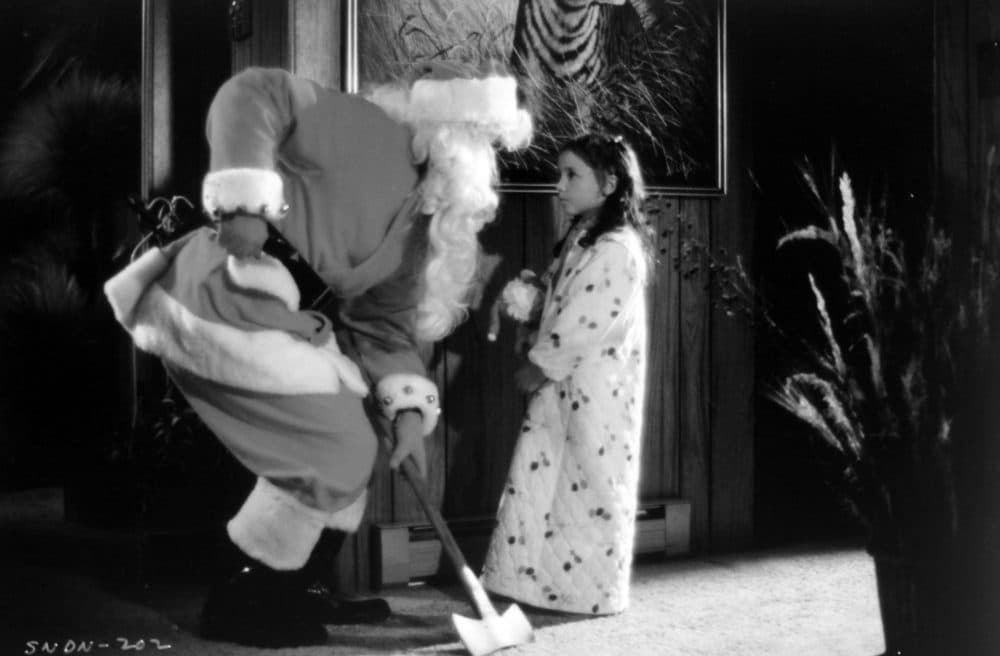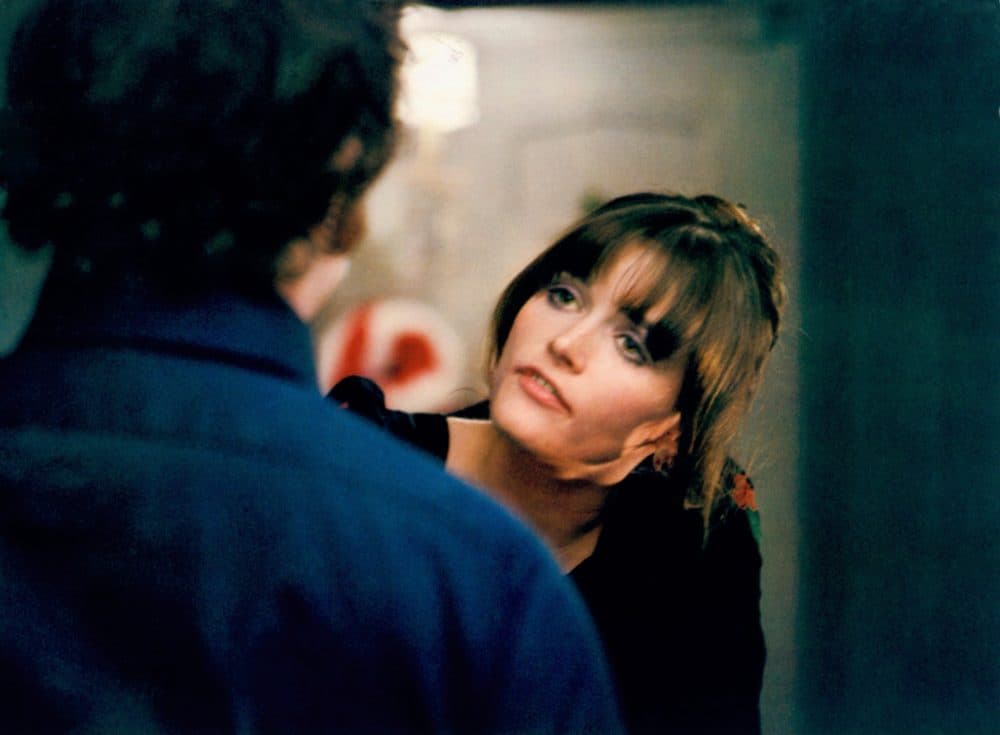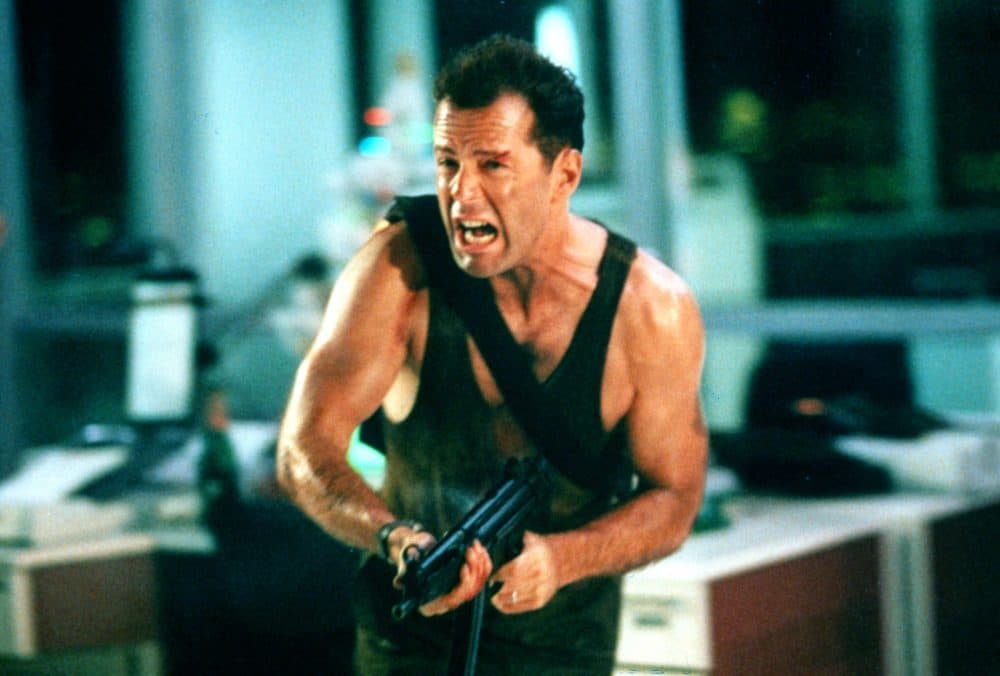Advertisement
Sick of the Christmas cheer? The Coolidge is screening three holiday slashers as a counteroffer

My mom watches Christmas movies on the Hallmark Channel 24/7 this time of year. They’re playing in the background for most of her day, a never-ending parade of unhappy career gals ditching their big city jobs to reconnect with old high school beaus during the tree-lighting ceremonies in the center of these photogenically quaint little towns. (Mom’s a good enough sport to put up with me asking how bored these women are going to be when they realize there’s nothing to do there after the decorations come down, except maybe wondering where all the guys went on Jan. 6?) Still, these movies seem pleasant enough and I suppose there are far more sinister things for senior citizens to be absorbing on cable all day. But for those of us who’ve had it up to here with Christmas cheer, the Coolidge Corner Theatre has some clever counterprogramming over the weekend, bringing some beloved holiday bloodbaths back to the big screen.
First up on Friday night (Dec. 17) is “Black Christmas,” director Bob Clark’s 1974 slyly funny slasher picture that arguably invented the genre (or at least codified it for English-speaking audiences) four years before John Carpenter’s “Halloween.” It’s the twisty tale of a sorority house under siege on the first night of winter break, with a faceless creeper in the attic stalking students and making obscene phone calls. The killer cast is led by Olivia Hussey of “Romeo and Juliet” fame, soon-to-be “SCTV” star Andrea Martin (in a role originally assigned to Gilda Radner, who dropped out to do some new sketch show on NBC) and “2001: A Space Odyssey” starchild Keir Dullea, playing a conservative conservatory pianist and a very bad boyfriend indeed. But the movie is stolen outright by a star-making turn from Margot Kidder as the sauciest of sauced co-eds. More horror movies could have used a drunk Margot Kidder mocking all the adults and giving liquor to children in the background of serious scenes.
In a genre that eventually came to encompass an entire calendar (“Friday the 13th,” “My Bloody Valentine,” “April Fool’s Day,” etc.), what makes “Black Christmas” a classic is the oddball, quintessentially Canadian humor – no matter how many randomly placed, prop American flags Clark litters the sets with – and some surprisingly sturdy character work. The movie’s scary but you remember it warmly because you like these people. Everyone’s got an amusing bit of business here, from the girls’ resentful house mother (a role offered to Bette Davis, who unsurprisingly declined) and Doug McGrath as the world’s dumbest deputy. The depiction of the sorority sisters is surprisingly short on leering, and seems startlingly progressive nearly half a century later, with a pivotal argument between Hussey and Dullea over her plans to abort an unwanted pregnancy. (He’s told it’s none of his business.)

Director Clark would seldom appear so advanced again. He became better known for the sleazy high school sex comedy “Porky’s” and its increasingly dire sequels, the rest of his resume reading like a game of Mad Libs, with titles like “Baby Geniuses,” “The Karate Dog” and the ghastly Dolly Parton-Sylvester Stallone country musical “Rhinestone.” But the extent of Clark’s strange range can perhaps be measured by the other Yuletide favorite he helmed, the sweetly nostalgic basic cable perennial “A Christmas Story,” which has nothing whatsoever in common with “Black Christmas,” not even shooting your eye out.
Nowhere near as accomplished as “Black Christmas,” but a fascinating film history footnote nonetheless, is the following evening’s “Silent Night, Deadly Night,” which caused a maelstrom of controversy during its brief 1984 theatrical run, for daring to depict Santa Claus as a serial killer. To be fair to the filmmakers, it’s not actually St. Nick who is doing the murdering here, but rather a beefy young lad named Billy, who years ago witnessed his parents’ murders and his mother’s sexual assault at the hands of an armed robber wearing a Santa suit. Triggered by his new job at a toy store, Billy goes on a Christmas Eve rampage full of all the ugly, heavily sexualized and relatively witless violence one would expect from the lower rungs of ‘80s slashers.
What made the movie infamous was the studio’s decision to run television commercials during family programs like “Little House on the Prairie,” traumatizing if not a generation of children, then most certainly their moms, who lost their minds in massive protests that made it all the way to the national news. Still, the ads worked, as “Silent Night, Deadly Night” opened to a bigger box office that weekend than the season’s competing horror movie, the original “A Nightmare on Elm Street.” But they may have worked too well, as the controversy raged on with powerful movie critics Gene Siskel and Roger Ebert – who could be terrible schoolmarms about this sort of stuff — doing a special segment on their show during which Siskel scowled into the camera and read aloud the names of the writers, producers and distributors of the picture, saying, “Shame on you.”
Because of all this outcry, “Silent Night, Deadly Night” was pulled from theaters after its second week of release, the notoriety lending a largely mediocre movie a long and hugely profitable second life on home video. But before that, one of the protests had included an open letter from Hollywood legend Mickey Rooney that began, “I’m all for the First Amendment, but…” (always a great way to start a statement) before proceeding to call the movie’s producers “scum” who should be run out of town. Amusingly enough, seven years later Mickey Rooney starred in “Silent Night, Deadly Night 5: The Toy Maker.”

Finally, on Monday night (Dec. 20) comes my personal favorite holiday movie, a staple of the Burns household on every Christmas Eve. (Decades ago, I started putting on the VHS when my sister went to midnight Mass, and the tradition stuck.) Some people like to claim that “Die Hard” isn’t a Christmas movie, even though it takes place at a Christmas party on Christmas Eve and prominently features sleigh bells and Christmas carols on the soundtrack. Whatever you want to call it, director John McTiernan’s action masterpiece remains a model of top-flight Hollywood craftsmanship that’s all but vanished from the blockbuster arena. After umpteen viewings, it still makes me a jolly, happy soul.
“Die Hard” has been so often imitated and thoroughly absorbed into our pop consciousness it’s easy to forget how radical it felt back in 1988. Action movies were owned by invincible, oiled musclemen like Stallone and Arnold Schwarzenegger, or the perpetually unperturbed Dirty Harry. Bruce Willis’ John McClane wasn’t a superhero (though he later became one in the series’ mostly lamentable sequels) but rather a regular guy in the wrong place at the wrong time. He was frightened, he was hurt and he made mistakes. McClane acted the way we liked to imagine that we would under similar circumstances, except cooler and funnier because he’s Bruce Willis, a television comedian who most thought had no business headlining a summer action extravaganza.
I’ll confess that the first time I saw a standee for “Die Hard” I laughed out loud at the sight of David Addison, the fast-talking, Motown-singing detective from ABC’s delightful “Moonlighting,” grimacing and holding a gun. It sounds awfully strange to say now, but back then Bruce Willis was nobody’s idea of an action hero, which of course only added to his appeal as McClane. You’d expect Sly or Arnold to easily shoot their way out of this scenario, but with Willis it could go either way. He was vulnerable in a way other movie macho men weren’t. The poor guy didn’t even give a damn about the bad guys' plan, he just wanted to patch things up with his wife and get home to see his kids for Christmas.

It’s a more patient picture than could be made on such a scale today. Nobody gets shot for the first 32 minutes, as McTiernan lets us get to know the characters – especially that sardonically funny villain played by English stage actor Alan Rickman in his movie debut — and lays out the geography of the building that will be so crucial for us to understand later. None of this time is wasted, as seemingly inconsequential touches like a knocked-over picture frame or the limo driver’s loud car radio come into important play soon. In 1988, all the gargantuan explosions and helicopter stunts seemed a bit absurd in their excess, but have come to feel relatively restrained compared to today’s weightless CGI spectacles.
On the big screen, it is an extravagantly beautiful experience, with legendary cinematographer Jan de Bont (who went on to direct “Speed,” a far worthier spiritual sequel than any of the official follow-ups) luxuriating in lens flares and gleaming lights reflected on this shiny new building’s cool, silver surfaces. You might not want to call “Die Hard” a Christmas movie, but I still consider it a gift.
“Black Christmas” screens Friday, Dec. 17, “Silent Night, Deadly Night” screens Saturday, Dec. 18 and “Die Hard” screens Monday, Dec. 20 at the Coolidge Corner Theatre.
